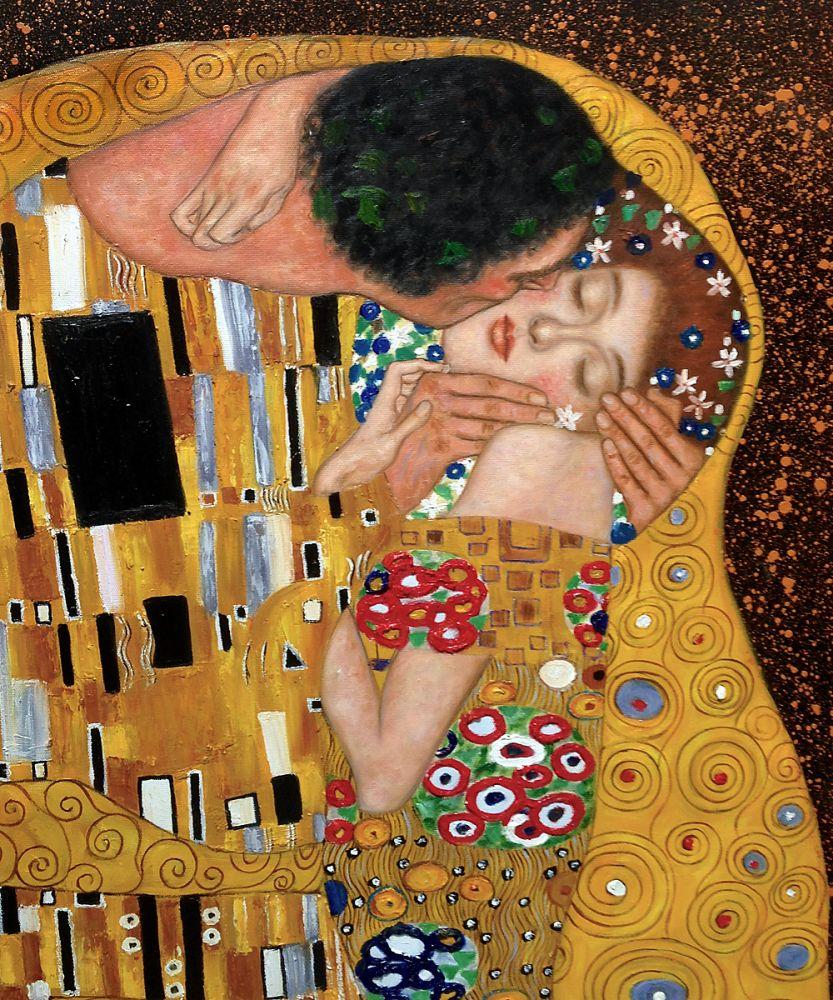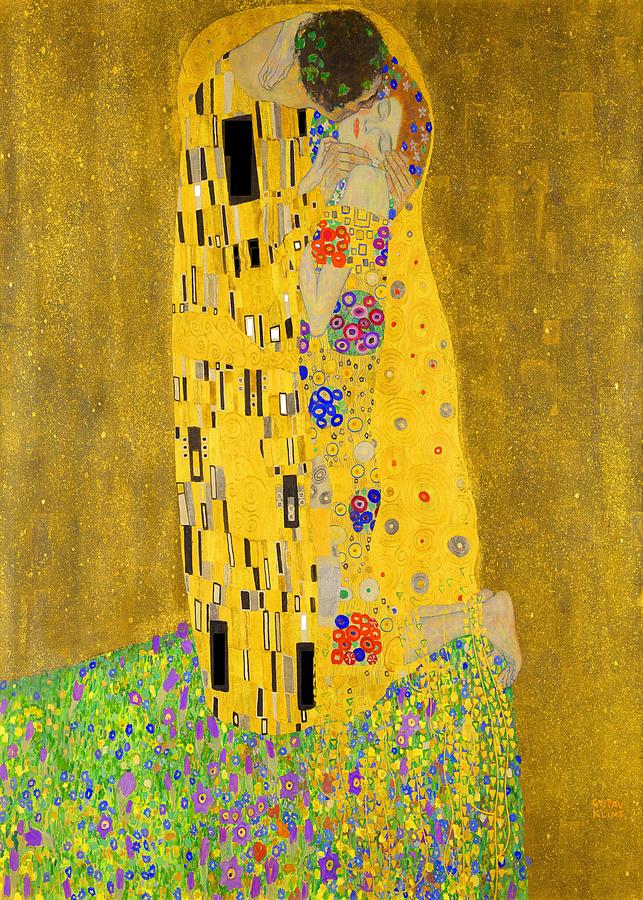

The couple is also presented in a non-dualist fashion, in that their positioning blurs the lines of male and female. Deikman suggests that a person who develops a receptive consciousness is "not distinct from nature" because there is "blurring or merging.boundaries," and this self would perceive the universe with a "World-centered awareness." (6) The couple positioned in the natural world, are two spiritual seekers who have been opened to receive their environment, because they have the open hands of a receptive consciousness. This Taoist notion that the self is part of, not separate from, the universe, is an element of A.J Deikman's view of the receptive consciousness. These recurring floral patterns, which run through all parts of the painting, actually frame the couple in nature, so that they are not just connected to their environment, but are a part if it. In fact, even the circular spots of color found on the cloak which covers them suggests an abstract floral imagery. Additionally, the woman wears similar flowers in her hair, further connecting the humans with the natural world around them. or against it." (5) This unity with one's natural environment is present in the floral motif of "The Kiss." Images of tiny flowers dot the ground where the couple kneels, as if the couple springs directly from the Earth, like the trunk of a tree, reflected in the erect nature of their posture. Eve Mullen explains that non-dualism means "human beings are. This is an obvious element in "The Kiss." Dr. Huston Smith claims "Taoism eschews sharp dichotomies." (4) That is to say, those distinct divisions between opposites such as male/female, life/death, and self/other, are blurred almost to the point of nonexistence.
#THE KISS PAINTING FREE#
The painting depicts a universe free of the separation of objects into stark opposites, but instead a world of non-dualistic convergences, as embraced by practitioners of Taoism. Through these notions, related to specific exoteric doctrines, the painting blossoms as a powerful spiritual reflection of a way the seeker might envision her world and the divine presence that has created it, as well a vision of the moment of enlightenment.

However, it is in this passionate imagery that Klimt's painting also evokes a sense of Taoist non-dualism, the Sufi principles of the lover/beloved relationship and the ecstatic loss of self, and the acquisition of a type of divine knowledge. (1) Klimt lived a quiet life, "somewhat cloistered," but "deeply devoted to his art." (2) Despite his isolation, Klimt's images reflect a profound appreciation of the vibrancy of life, and of the natural world, grounded in exotic color schemes and a "highly erotic nature," often depicting nude women or couples in poses that suggest a phallic form. Gustav Klimt (1862-1918) was an Austrian painter of the Vienna Secession, a movement of Art Nouveau which he helped to found in 1897. This representative oneness, passion for the universe, is perhaps most aptly described as that instance where the human soul comes to feel the embrace of the Divine Beloved.
#THE KISS PAINTING FULL#
I have never seen a painting as tender and vibrant as Gustav Klimt's oil on canvas painting, "The Kiss." To me, "The Kiss," circa 1907-08, enacts a perfect transaction between two people with hearts so full of love that the world around them bursts in flamboyant, colorful life.


 0 kommentar(er)
0 kommentar(er)
